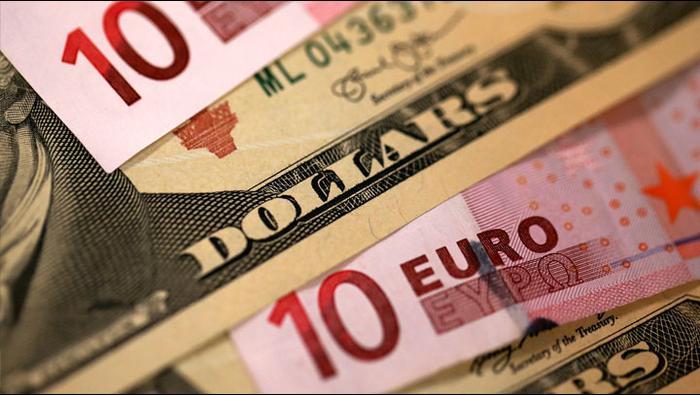(BFM Bourse) – Although perceived as austere, the world of finance is not lacking in imagination. Between the expressions and other injunctions that are the folklore of the Stock Exchange, traders are spoiled for choice. And the forex market is no exception. Several major pairs are named after birds or even a famous television series from the 60s.
In trading rooms, slang is widespread and allows traders to communicate quickly in a stressful environment where time is at a premium. Like the stock market, the foreign exchange market is full of humorous expressions and nicknames to designate currencies.
To refer to the US dollar king, the greenback is commonly used to refer to the queen of world currencies. But the best known international currency is also called Greenback to recall the green color on the back of banknotes issued during the American Civil War of 1861. Or Buck, which is widely used in English slang to designate a dollar. The expression “buck” dates back to the 18th century when deer skins (buckskins) were used as currency to acquire goods.
“The first written use of the word ‘buck’ was in 1748. Conrad Weiser, a Dutch pioneer in Pennsylvania who had frequent contact with settlers and Native Americans, wrote in his diary that someone had had objects stolen worth 300 bucks. He specifies that at the time, five bucks were worth a barrel of whisky,” recalls Investopedia.
The currency of the euro zone, on the other hand, did not inspire many people. The monetary slang to designate the current currency in the eurozone is limited to a basic “single currency”.
By extension, currency pairs have not escaped this lexical creativity. Recall that a currency pair is the quotation of the value of one currency against another on the foreign exchange market. It is considered that there are four major currency pairs which are as follows: Euro/US Dollar (EUR/USD), US Dollar/Yen (USD/JPY), British Pound/US Dollar (GBP/USD) and the US dollar/Swiss franc (USD/CHF).
In addition to this major four, there are three other pairs which are commodity currencies expressed against the American dollar: the Australian dollar/American dollar (AUD/USD), the American dollar/Canadian dollar (USD/CAD) and the neo-dollar. Zealand dollar / US dollar (NZD/USD). And to simplify exchanges, traders have enriched their vocabulary over the centuries by assigning small nicknames to the currency pairs they trade.
GBP/USD: the cable
In the mid-19th century, before the invention of satellites and fiber optics, the exchange rate between the pound sterling (GBP) and the US dollar (USD) was transmitted across the Atlantic Ocean by submarine cable. The first such cable that linked the London and New York stock exchanges was laid in 1858 and put into service in 1866. And nearly 160 years later, this nickname has been passed down from generation to generation of traders.
EUR/USD: fiber, cable 2.0
Fiber is the nickname given to the euro/US dollar pair. Two versions are vying for the limelight. The first would find its origin in the material used to manufacture the banknotes of the euro zone, namely the polymer cotton fiber. The second, more current would be purely and simply the modern counterpart of the cable described above. The old cable has been replaced by state-of-the-art fiber. It is up to you to make your choice.
In this idea of a link between two continents, the Channel Tunnel (or Channel Tunnel) connecting continental Europe to the United Kingdom gave birth to the portmanteau word “Chunnel”. This nickname refers to the pair sterling / euro (GBP/EUR). Other nicknames are much more original. In the world of currencies, the names of birds have a much friendlier connotation.
USD/NZD: the kiwi
Our overview of the nicknames assigned to currencies takes us to nearly 20,000 kilometers from France, namely in New Zealand. The emblematic symbol of this country is the kiwi, a bird the size of a hen whose coat immediately brings to mind the fruit. And it is quite naturally towards this nickname that the pair American dollar / New Zealand dollar (USD/NZD) was baptized.
USD/CAD: the loonie or loonie
Regarding the pair US dollar / Canadian dollar (USD / CAD), again, the name given to this pair of currencies originates from a bird. The term loonie or loonie in French is derived from the Canadian one dollar coin introduced in 1987, the reverse of which is struck with this bird which looks like a duck but is incorrectly designated as such.
This duplication is also valid for the Swiss franc which has the nickname Swissy, which is also valid for the US dollar/Swiss franc pair (USD/CHF).
USD/JPY: Ninja
The USD/JPY pair is given the nickname ninja in reference to a certain category of Japanese spies draped in black, which is an integral part of the legend and folklore of the land of the Rising Sun.
USD/RUB and EUR/RUB: Barnie and Betty
Trader slang has recently been enriched with a couple of nicknames for a currency pair. In English, the ruble is called ruble… which closely resembles “Rubble” which is the last name of Fred Flinstone’s neighbors – Barney and Betty Rubble – themselves emblematic characters of the Flintstones. Thus, this nod to this cult animated series of the 60s gave birth to Barney to designate the euro/ruble pair (USD/RUB) and Betty for the euro/ruble pair (EUR/RUB).
Sabrina Sadgui – ©2023 BFM Bourse
